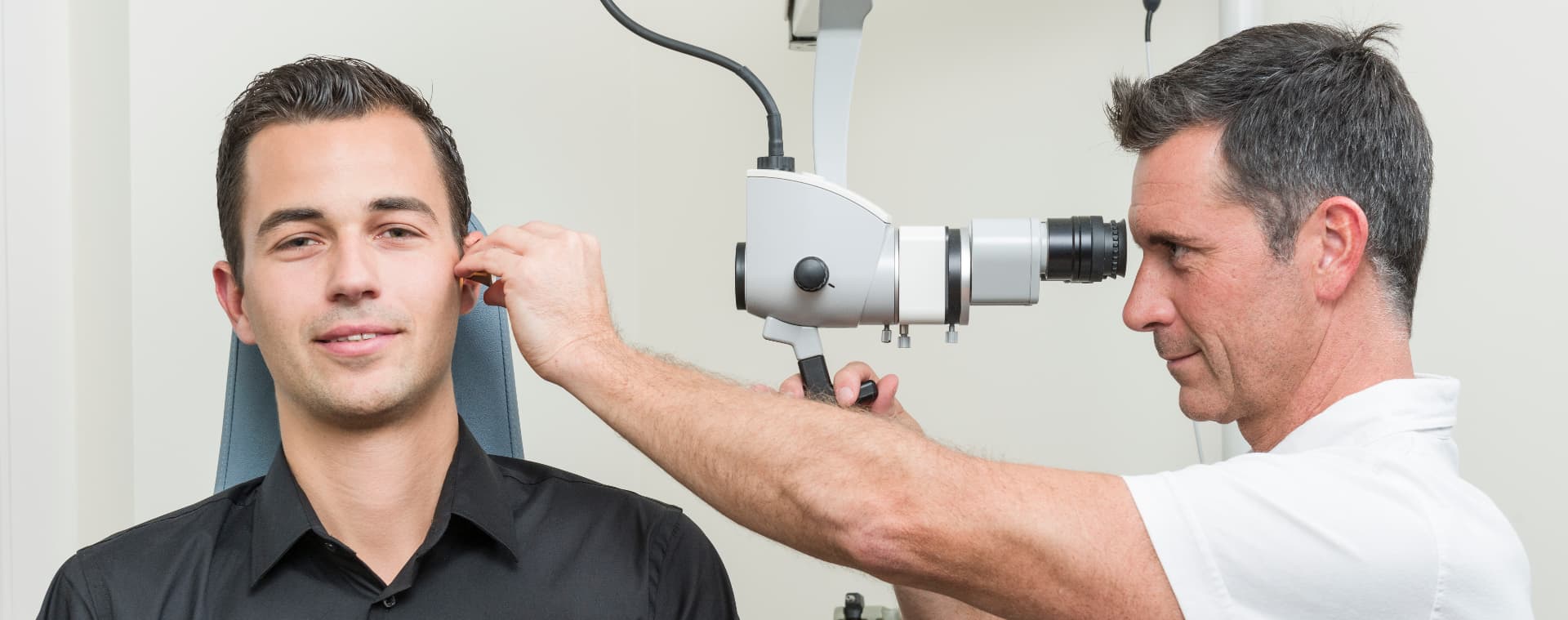SYMPTOMS OF A RUPTURED EARDRUM AND MOVEMENTS TO ADOPT

30 March 2020
A ruptured eardrum is very common and may occur for many reasons. How do you recognize it and what should you do if it is torn, whether lightly or severely?
A ruptured eardrum is very common and can occur as a result of a routine, everyday incident. In general, it’s not serious, as the membrane repairs itself after a few weeks. For more serious ruptures, a tympanic graft should be considered. In any case, it is wise to know how to identify the symptoms to address any issues quickly.
Causes
● Incidents and minor trauma: Introducing sharp objects into the ear canal is one of the main causes of a ruptured eardrum. We have a bad habit of using whatever we can find to remove bothersome wax build-up in our ears: pen caps, cotton swabs, or even match sticks, thinking we can delicately control our movements. However, the eardrum is a very fragile membrane and this repetitive gesture can damage it. Other kinds of trauma such as a strong slap can also rupture the eardrum.
● Chronic ear infections: A perforated eardrum is a frequent side effect in cases of repeated ear infections, because the flow of pus exerts pressure on the eardrum which eventually cracks after a certain time. This is a non-severe rupture, but it is also the most serious one because it can be permanent.
● Very intense noise: It is rare, but not impossible that a high-intensity noise like an explosion can cause a breach of the eardrum.
● Change in pressure: This phenomenon occurs most often during scuba diving or an airplane descent. The difference in pressure stretches the tympanic membrane to its maximum and can result in a tear.
Common Symptoms
A minor tear can go completely unnoticed, but a person may experience many symptoms at the same time:
● Radiating pain in the face: When the middle ear is no longer protected, the slightest drop of water can penetrate it and cause severe pain depending on the severity of the tear.
● A decrease in hearing: When your ear feels clogged, or there is a whistling or buzzing sound accompanied by a partial (or total) loss of hearing, these are often signs of a ruptured eardrum.
● Infections: A tear is an open door for bacteria. An odorous fluid (depending on the severity of the infection) may accumulate and flow into the ear;
● Water seeping from the ear after swimming or dizziness are also tell-tale signs of a ruptured eardrum.
What to do in case of a ruptured eardrum?
● In case of doubt, discomfort or pain, you should always consult an ear, nose and throat (ENT) doctor.
● The eardrum should heal on its own within 6 to 8 weeks. During this time, you should avoid anything that may aggravate the tearing or cause infection. This means do not introduce anything, such as washing with water, using eardrops, cotton swabs, earplugs, etc.
● Use more care when blowing your nose or sneezing (do not plug your nose).
● Limit yourself to the outer part of your ear canal when you clean it. Use a clean wipe (new) and your little finger only.
● Also avoid sudden movements that can cause trauma (violent sports, etc.), but also changes in pressure (mountains, pools, airplanes, diving).
● For unhindered healing, avoid noisy environments.
Treatments and Impacts on Hearing
A perforated eardrum doesn’t affect hearing quality if it does not exceed 3 millimeters. If it is more serious (more than two thirds of the eardrum), hearing loss can range from 20 to 40 decibels. Consult a doctor as soon as you notice an annoying symptom such as buzzing, moderate pain, or partial deafness to confirm the diagnosis. They can prescribe antibiotics in case of infection or special products to promote healing. It is possible, especially in the case of recurring ear infections, that the tear will no longer close. In case of permanent rupture, the doctor may suggest tympanoplasty in order to improve your hearing.
We encourage you to pay closer attention to the signs of a ruptured eardrum in order to what is necessary not to aggravate it any further.
Autres articles
CONSULT AN ENT SPECIALIST IN CASE OF VERTIGO
Often, people suffering from vertigo – that is to say, a strong sensation of dizziness and a loss of balance…
NOISE IN THE WORKPLACE: WHAT TO DO IN CASE OF OCCUPATIONAL DEAFNESS
Updated on July 07 2023 The incidence of occupational deafness in certain vocations cannot be understated. In Quebec, it is…
BENEFITS OF A RECHARGEABLE HEARING AID
TNowadays, some manufacturers offer cutting-edge hearing aids with rechargeable induction batteries. This avoids the need to regularly change batteries and…


